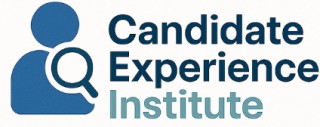Understanding the Role of 1-on-1 Meetings in Candidate Experience
The Purpose of 1-on-1 Meetings
1-on-1 meetings play a pivotal role in shaping the candidate experience by fostering open communication and building trust between managers and employees. These meetings offer a unique opportunity for direct reports to discuss their goals, challenges, and progress, contributing to a more personalized and engaging work environment.
Regularly scheduled one meetings serve multiple purposes:
- Feedback Exchange: Allows managers and employees to give and receive constructive feedback, opening up avenues for discussion about career growth and work-related challenges.
- Goal Alignment: Provides a structured setting to ensure that employee goals are aligned with team and organizational objectives, paving the way for actionable agendas.
- Personal Development: Encourages conversations about career aspirations and identifying opportunities for professional development that can benefit both the employee and the team.
- Problem Solving: Offers a private forum for addressing sensitive issues or concerns, enhancing problem-solving efficiency and employee satisfaction.
The integration of a well-designed meeting template can streamline the process, ensuring that time is spent effectively. Meeting agendas focused on current project updates, future planning, and team dynamics can help maintain a productive rhythm. These agendas are beneficial not only for face-to-face interactions but also when carrying out meetings through tools like Google Docs for teams spread across different locations.
To maximize the effectiveness of these meetings, preparation is key. Managers should come equipped with specific questions and ready to discuss action items from previous meetings. Encouraging a culture of preparation among team members ensures that direct reports feel valued and heard, ultimately leading to more meaningful check-ins.
Key Elements of a Successful 1-on-1 Meeting Template
Creating a Productive One-on-One Meeting Structure
To craft a truly effective one-on-one meeting, understanding the key components crucially matters. These meetings serve as the backbone of job satisfaction and performance enhancement in any organization. A solid framework can set the tone for meaningful discussions and foster a collaborative atmosphere among team members.- Setting a Clear Agenda: Establish an agenda prior to the meeting to give structure and direction. This could include discussion on progress towards goals, any roadblocks encountered, and feedback on current projects. Sharing the meeting agenda beforehand allows both the manager and the employee to prepare relevant points and contributes to a more productive conversation.
- Fostering Open Communication: Encourage an open dialogue where employees feel comfortable sharing their thoughts. Establishing trust and ensuring employees know their input is valued can significantly impact engagement levels. An open forum also allows managers to provide constructive feedback effectively.
- Balancing Feedback and Listening: A successful meeting requires a balance between providing feedback and taking the time to listen to the employee's perspective. Asking relevant questions and actively listening can unveil insights that might otherwise remain hidden. For more on this, explore our guide on mastering communication with job candidates.
- Allocating Time for Reflection and Action Items: Reserve time towards the end of the meeting to reflect on what has been discussed and vocally establish action items. This clarity on next steps ensures both parties are aligned on objectives and can help in tracking progress during the next meeting.
- Consider Using Meeting Templates: Utilizing structured meeting templates, such as those available in Google Docs, can simplify the process and ensure consistency across different employees' sessions. Templates often help to streamline the check-in process, facilitating smoother management of direct reports and team members.
Preparing for a 1-on-1 Meeting: Best Practices
Getting Ready for a Productive 1-on-1
Preparation is key to making the most out of your 1-on-1 meetings. As you plan your meeting agenda, consider what you want to achieve during this time with your manager or direct report. A well-prepared meeting template can help guide the conversation and ensure all important topics are covered.
Setting a Clear Agenda
Before the meeting, draft a meeting agenda that includes key discussion points. This could range from project updates to personal development goals. Sharing this agenda in advance allows both parties to come prepared, ensuring that the meeting is focused and productive. Consider using essential questions to guide the conversation.
Effective Time Management
Time is precious, so it's crucial to allocate it wisely during your 1-on-1 meetings. Set aside specific minutes for each topic on your agenda, allowing for flexibility but also ensuring that all areas are covered. This helps in maintaining the flow of the meeting and prevents any topic from being rushed or overlooked.
Gathering Relevant Information
Before the meeting, collect any necessary data or feedback that might be relevant to the discussion. This could include performance metrics, project timelines, or feedback from team members. Having this information at hand allows for more informed discussions and helps in setting realistic action items.
Encouraging Open Communication
1-on-1 meetings are a great opportunity for open and honest communication. Encourage employees to share their thoughts, concerns, and ideas. This not only helps in building trust but also provides valuable insights that can benefit the entire team. Be open to feedback and ready to discuss any challenges they might be facing.
Using Technology to Your Advantage
Leverage tools like Google Docs to share and update meeting templates, ensuring that both parties have access to the latest information. This can help in keeping track of past discussions and action items, making it easier to follow up in future meetings.
Common Challenges and How to Overcome Them
Overcoming Common Challenges in 1-on-1 Meetings
1-on-1 meetings between managers and employees are a cornerstone for effective communication, but they also come with their unique challenges. Addressing these can significantly enhance the overall candidate experience and help in achieving meaningful outcomes.
Time Management
One of the most common issues is time management. Often, meetings can either overrun their scheduled time or feel rushed. To address this, it's essential to establish a clear meeting agenda in advance and stick to it during the meeting. Allocating specific time slots for different agenda items can also help maintain focus and ensure that all points are covered adequately.
Open Communication
Encouraging open communication may not always come naturally, especially if there's a hierarchical gap. Employees might feel hesitant to share honest feedback or bring up concerns. Creating a safe environment where open discussions are welcomed can help overcome this barrier. Asking thoughtful questions and actively listening can promote more candid conversations.
Consistent Follow-Up
Another challenge is ensuring that action items from one meeting are followed up on in the next. Without consistency, discussions may seldom lead to actionable outcomes. Utilizing a meeting template can help track progress on goals set and action items discussed. This not only promotes accountability but also ensures that meetings are productive and contribute to the employee’s growth.
Balancing Structure with Flexibility
While structure is key, it's equally important to allow flexibility within the meeting. Being too rigid can stifle innovation and creativity. Allow some room for spontaneous discussions that may offer insights or innovative solutions, but ensure they remain relevant to the meeting's purpose.
Adopting these strategies can transform your 1-on-1 meetings from mere check-ins into powerful tools that enhance the candidate experience by fostering a strong, collaborative relationship between managers and their direct reports. For more insights, consider exploring essential questions for director-level interviews that can help guide these interactions effectively.
Real-Life Examples of Effective 1-on-1 Meeting Templates
Using Real-Life Scenarios to Design Successful Meetings
When it comes to creating efficient one-on-one meetings, learning from real-life templates and examples can be incredibly helpful. By examining what has worked for others, you can refine your own meeting strategy and ensure your sessions are productive and meaningful. Consider some successful one-on-one meeting templates that include key elements such as a clearly defined agenda, time management, and open questions that foster communication between managers and employees. For example, a meeting agenda template might begin with a quick check-in to understand the employee's current work priorities and mood. This sets a positive tone for the rest of the meeting.Templates for Effective Communication
Well-structured meeting templates are crucial for effective communication. Including open-ended questions in the template can help managers gather valuable feedback and insights from their direct reports. This also encourages transparency and an open-door policy that can strengthen the team dynamic. Templates that incorporate regular check-ins and action items are particularly valuable. Regular check-ins can facilitate ongoing dialogue, while action items ensure that important decisions and goals are clearly documented and followed up in subsequent meetings.Benefits from Downloadable Resources
For those looking to refine their approach, utilizing downloadable meeting templates can be a significant advantage. Online platforms like Google Docs offer resources that can be adapted to suit different meeting styles and needs. By examining a variety of templates, you can find what aligns best with your team's goals and work culture. Remember, the purpose of these templates is to enhance the overall efficiency of your meetings. By viewing various templates, you can find the right balance between structured topics and flexibility to adapt the conversation as needed. Whether you are meeting with team members or having a one meeting with an individual employee, having a well-thought-out template to guide your discussion can make all the difference. By learning from practical examples, you can ensure that each meeting not only serves its intended purpose but also contributes to a positive candidate experience.Evaluating and Improving Your 1-on-1 Meeting Process
Assessing and Optimizing Your 1-on-1 Meetings
To truly leverage the benefits of effective 1-on-1 meetings, it’s crucial to regularly evaluate and enhance the process. Here are some strategies to consider:- Gather Feedback: Encourage feedback from employees and managers after each session. Understanding what aspects of the meeting work well and which need improvement is essential. Questions like "Was the meeting agenda clear?" or "Did you feel your concerns were addressed?" can guide your adjustments.
- Review Meeting Outcomes: Assess the completion of action items and whether the meetings help in achieving work goals. Successful 1-on-1s generally lead to consistent progress in employee objectives and team projects.
- Experiment with Formats: Keep your meeting format flexible. While a template can provide structure, occasional revisions can prevent the sessions from becoming mundane. Consider periodically using different meeting templates, such as those available in Google Docs, to explore new approaches.
- Track Time and Efficiency: Evaluate how time is being used during these meetings; are all key topics covered efficiently? Should the meeting time be adjusted? Tracking time spent can offer insights into needed adjustments.
- Ensure Purpose Alignment: Revisit the minutes purpose often to ensure that each meeting aligns with overarching team goals and employee development objectives. This alignment is crucial for maintaining relevance and engagement.












